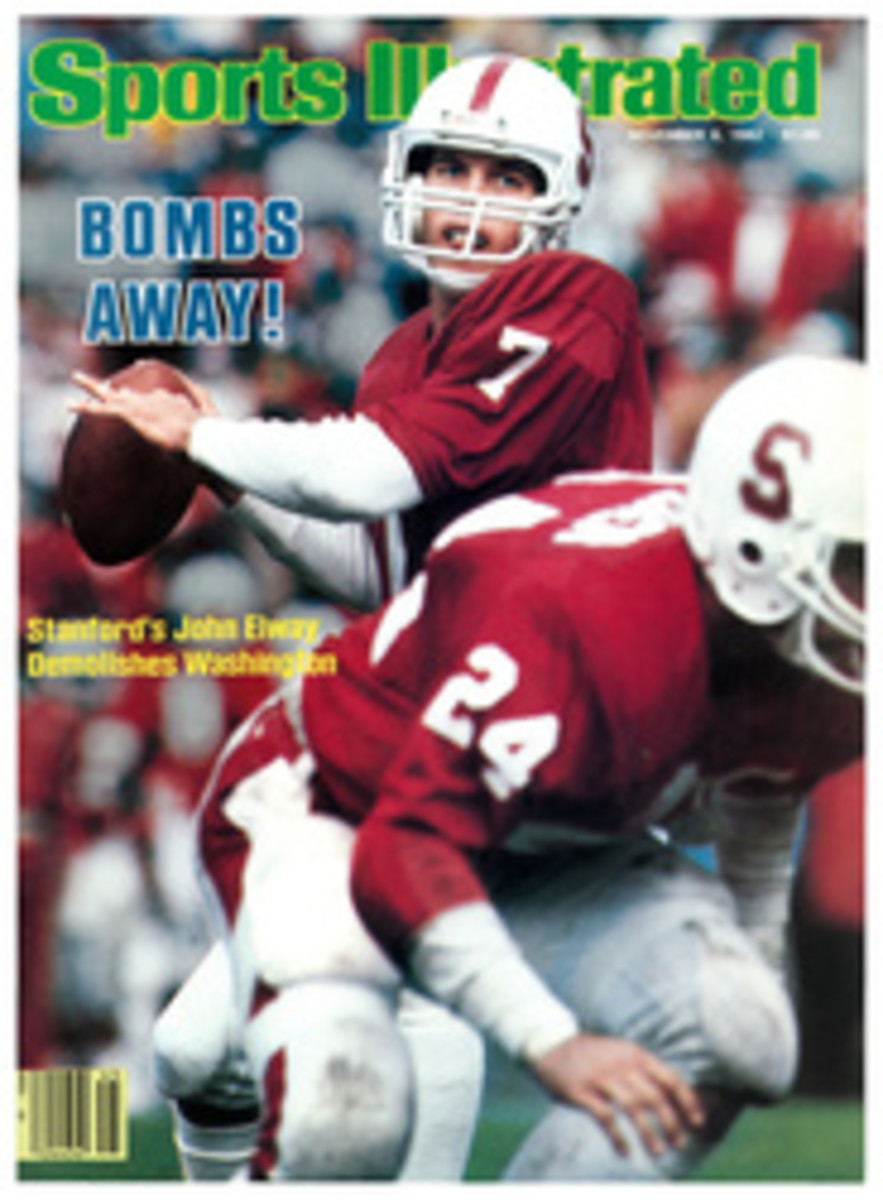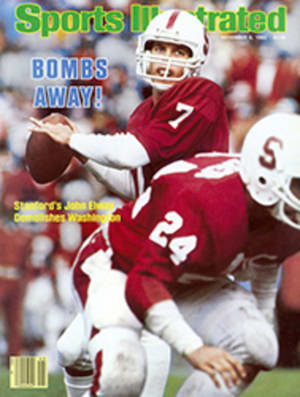
Fighting Back As A Weekend Warrior
The most memorable aspect of Bill Walton's return to the NBA did not occur last Friday night, when in his first league game since March 11, 1980 he scored 20 points, had nine rebounds and blocked two shots in 28 minutes as his San Diego Clippers lost 113-99 to the Phoenix Suns. No, the moment to remember came the next day, as the Clippers shot free throws in a small gym on the North Island Naval Air Station in nearby Coronado. Except for Walton. He huddled on the sideline with Coach Paul Silas and Assistant Coach-Director of Player Personnel Pete Babcock. In Silas' hand was a Clippers' schedule, in Babcock's was an airline flight guide, which to the Clippers may be more important than their playbook.
In truth, the latter is dependent upon the former, which is why Silas and the Clippers have allowed Walton to begin his umpteenth comeback from foot injuries by commuting on weekends from his second-year classes at Stanford law school to wherever San Diego is playing. Walton plans to play this Saturday night in Chicago—hence the huddle to discuss flights. A week later there's a home game against Kansas City. The Clippers are taking it one week at a time. Which is all you can do when you finish 17-65, as San Diego did last season, and your owner spent most of the off-season trying to move the franchise.
When the league nixed owner Donald Sterling's plan to shift the Clippers to L.A., he instituted a number of cost-cutting measures. Among them was practicing in Coronado. So what if the gym only has two baskets, the Clippers could use it free of charge. Before the start of training camp, each player was issued one practice jersey, one pair of shorts, two jockstraps and four pairs of socks.
Without the presence of first-round draft choice Terry Cummings, the 6'9" former DePaul All-America who is playing with Athletes In Action, and until the arrival of Guards Lionel Hollins and Randy Smith, who joined San Diego last week, the Clippers were in need of any bodies, which brings us to Walton. "Initially I was hardly overjoyed about having him once a week," Silas says, "but the more I thought about it, the more sense it made."
"The guys have been very, very good to me about this," Walton says. "It's not the most perfect situation, but given my track record, it's more sensible than anything else."
Heraclitus said "nothing endures but change," and perhaps Walton and his doctors, Ernie Vandeweghe and Tony Daly, had that in mind last summer when they broached the limited-time idea with the Clippers. Since January of 1981, when the bone structure in Walton's left foot was surgically reshaped to alleviate stress on the navicular bone, Walton has had only four well-spaced appearances against NBA-caliber players. In the fourth of those, the first of San Diego's two preseason games in mid-October, Walton scored 13 points and had 10 rebounds in 26 minutes against the Suns. With that lone exhibition appearance and three practice sessions under his belt, Walton was nonetheless in the starting lineup Friday night.
And although he and the Clippers talk at prearranged times, it's really more like catch as catch can, mainly because, as Walton says, "there are no phones in the library." Which is just fine with Silas. "Talking with him regularly doesn't concern me as much as him being ready to play," says Silas. "If he can only play once a week I don't see much sense in having him around all the time anyway."
The weekend arrangement isn't unprecedented. In 1962, the Lakers' Elgin Baylor was called to active duty with the Army Reserve. Baylor maintained his 38-points-per-game average playing mainly on weekends, but even he had problems.
In his first game as a part-timer, he scored 32 points and got nine rebounds in the West's 150-130 All-Star game victory. "My shooting was O.K. and I didn't get tired," Baylor said after the game, "but when I tried to make a move or to dribble, my timing was way off."
Other NBA players have had weekend-warrior status, among them Lenny Wilkens, now coach of the Seattle Super-Sonics. Unlike Baylor, Wilkens, then (1961) a guard with the Hawks, was an officer and couldn't easily get away from Fort Lee, Va. "I was assigned to troop duty," says Wilkens, whose Sonics beat the Walton-less Clippers 127-109 Sunday night. "In the morning I did running and calisthenics in addition to working out with the post team. I played one game a weekend for the Hawks, maybe two.
"But travel was the big problem. I had to fly to St. Louis after a day on the base and then play the next night. My situation was totally different from Walton's. My team had already played 20 games before I came back. Plus, he's trying to work his way back from injuries."
Right now, the other Clippers are too awestricken by Walton to be resentful. Says Forward Michael Brooks, "Everyone plays so much better with him. It's nice to be with someone who's been an All-Pro and MVP instead of watching him play with someone else."
"It would help if he played more, but somehow he manages to blend in with us," says 6'10" Jerome Whitehead, whose floor time is most drastically affected by Walton's walk-ons.
During the week, Walton balances his law books with the playbook. Despite a course load that includes antitrust and tax law as well as classes in business associations and U.S.-Mexico relations, each day Walton finds about three hours to bicycle, lift weights, run and shoot alone in a gym at Stanford.
"If playing intramurals at Stanford were the only level I could attain, I'd do it because I love the game," he says, "but I think that I can play again in the NBA. Right now, no matter how much I want to be out there, I have to be in control if I'm going to reduce the chances of re-injuring myself. [Walton's injuries, it should be recalled, were caused not by a single trauma but by the general wear and tear of playing in the pros.] I want this to work out more than anyone, so I'm doing all I can to ensure that it does happen and not fly away with the wind. I don't even think about the teams we'll be playing. The opportunity to play against everyone will come. At this point the bigger challenge is just being in any game.
"There are moments when everything's clicking and the team is falling into place, moments that you just live for. It's all eye contact. You have plays but everything done is split-second improvisation, and it's just by reading eyes."
The tone for Walton's latest return was set a minute and a half into the game when he blocked a shot by Alvan Adams but was called for goaltending. He picked up two quick fouls and sat out the remainder of the half with his third at 1:25 of the first period.
Walton started the third quarter, with the Suns ahead 58-45, and immediately scored on a short jump hook and a layup. A short time later he was officially welcomed back into the NBA when he was floored by an inadvertent Brooks elbow on a blind-side pick. For a moment Walton remained on the floor, seemingly stunned, but the blow only inspired him. He legally blocked his first shot at 9:06 of the quarter and the Clippers went on a tear to tie at 77 after three periods.
However, Walton was dragging noticeably late in the final period, as were Smith and Hollins, who led the Clippers' backcourt men in minutes played, with 48 and 25, respectively. The fact that the three had only a nodding acquaintance with San Diego's plays also showed as the Suns pulled away at the finish. Still, afterward, in the loser's locker room, there was a sense that the nightmare of a year ago had begun to dissipate.
Perhaps for one man it already had. Walton's first semester at Stanford ends in mid-December. Although the idea is for his once-a-week schedule to become twice a week and then full-time, whether he enrolls for the second term at law school depends on the progress he makes in his comeback. He refuses to speculate on the issue. After emerging from the shower room, Walton, his oft-injured foot apparently no worse for wear, waded through a mass of journalists waiting for him in front of his locker. Leaning back in his stall, Walton smiled. "It's nice to see all you guys again," he said.
PHOTO
ANDY HAYT
Walton was feeling no pain after getting 20 points and nine rebounds in 28 minutes.

